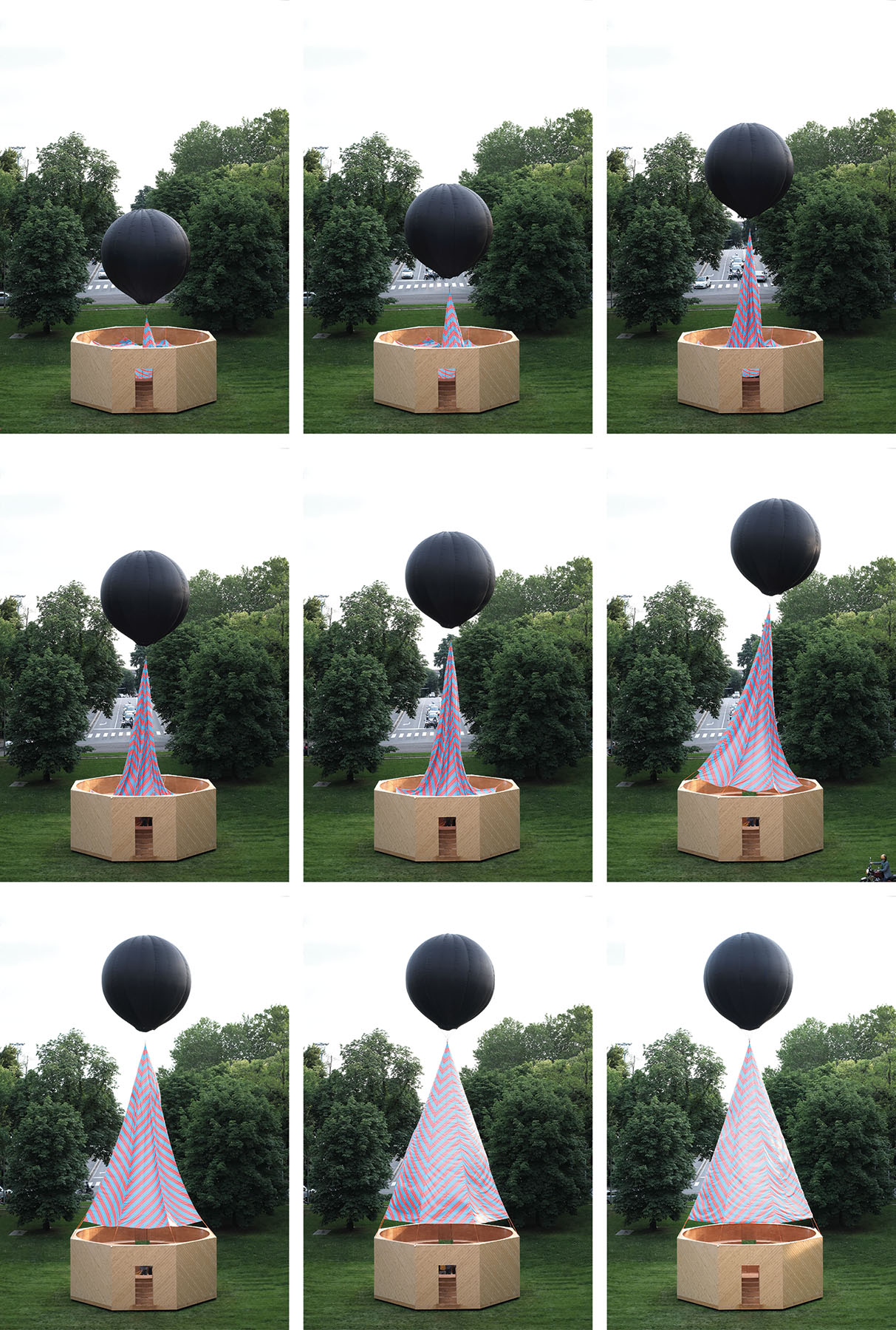2018 TEATRINO
TEATRINO
temporary pavilion for the e-flux conversation series at Milano ArchWeek, Triennale di Milano, 2018
The TEATRINO is a temporary pavilion designed to host interviews and conversations on architecture – in presence of an audience of about 90 people – to be placed in front of the main entrance of the Triennale building in Milan. It consists of a base and an aerostat roofing structure.
The base is an octagonal structure hosting a circular cavea of about 50 square meters. The cavea is accessed through two small stairs on opposite sides. Interviewees and interviewers sit on the lowest step of the cavea, inside a circular space of 1.50 m in diameter. All the rest of the space, divided into 50 cm high and 75 deep steps, is reserved for the public. The structure of the entire base is a wooden frame covered with fir plywood panels for flooring and diagonal wooden slats for wall cladding.
The roof structure is made of 8 cables anchored at the top of the base and tensioned by a helium balloon of 5 m in diameter. The balloon is able to develop an upward force of 42 kilos. Along the cables there is a triangular wedges covering in micro-perforated nautical fabric (70 gr/m2) printed. The entire roof structure, from the anchorage base of the cables to the bottom of the ball, is 11 meters high and weighs about 16 kg.
The TEATRINO is designed as an immersive, participatory and symbolic space. A small pagan temple to celebrate the rite of the interview in its collective dimension.
client: e-flux Architecture, Milano ArchWeek
location: Triennale di Milano
collaborators: Chiara Crisà, Clémence Allegre
photos: Thelonious Goupil, Louis De Belle
partners: Regione Friuli Venezia Giulia – Innova FVG – Filiera del Legno FVG
construction: F.lli Vidoni Srl (wooden structure), Aeronord Aerostati (aerostat structure)
